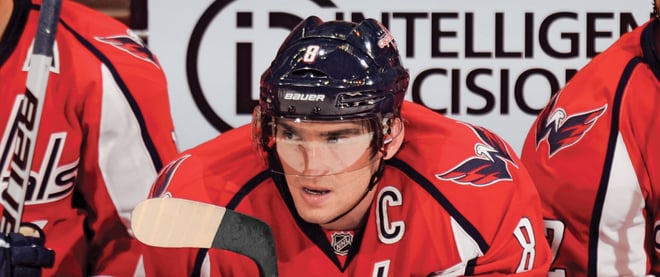How Bauer emerged as hockey’s undisputed top equipment brand
It’s what all the NHLers are wearing
Mitchell Layton/Getty Images
Share

Aside from world-class skill and athleticism, there’s one thing nearly every player in today’s NHL has in common: they wear something made by Bauer Performance Sports. In recent years, the hockey equipment maker that pioneered modern skate technology has become an industry behemoth, controlling 49 per cent of the global market for hockey gear. “We are number one in every category,” boasts president and CEO Kevin Davis.
Roughly 90 per cent of NHL players wear at least one piece of Bauer equipment. Seven out of 10 wear Bauer skates. As the puck dropped on the current NHL season, Bauer was the top hockey stick provider for the league’s players—beating out rival Easton—thanks in part to the introduction of the new Vapor APX model. Meanwhile, Bauer says it has surpassed legendary brand CCM—bought by Reebok in 2004—to become the leading seller of sticks, helmets, skates and goalie equipment.
It’s a radical change of fate for the company, which just a few short years ago seemed all but down and out. Sports giant Nike bought Bauer in 1994, when hockey’s growth in the U.S. market seemed almost limitless, buoyed by the latest fad of in-line skating. But by 2008, with the economy in a tailspin, hockey participation rates in Canada falling and the U.S. hockey experiment in shambles, Nike dumped it, selling to investment firms Kohlberg and Co. (best know for buying distressed companies) and Roustan Inc. for US$200 million—a steal compared to the US$395 million Nike paid in 1994. Davis admits it was a “very uncertain time.”
But rather than retrench, Bauer embarked on an aggressive acquisition strategy, absorbing companies that could expand its scope and complement its existing products. Davis credits Bauer’s new owners for their support. “It was a huge benefit to our company to have a financial sponsor who was willing to invest in our growth,” he says.
Four months after the Nike sale closed, Bauer bought Mission-Itech, a California-based face mask, goalie and protective equipment company that also made road hockey gear. Soon after, it purchased Jock Plus, noted for its patented undershirt featuring a sewn-on Kevlar neck protector. Bauer then entered the lacrosse market in June 2010, purchasing Maverik Lacrosse. The strategy is paying off. Revenues in the most recent quarter increased 29 per cent over the same period last year to US$142 million, while gross profit jumped 33 per cent to US$59.5 million.
The Bauer lineup now also includes an influential figure in the hockey world. Its chairman, Graeme Roustan, is behind a recent plan to build a 20,000-seat arena north of Toronto that could conceivably host a second NHL team in the GTA. Roustan, who grew up playing hockey in Montreal, primarily invests in the arena and aviation industries. In the late 1980s, he was involved in efforts to expand the NHL to San Jose and nearly bought an AHL team in 2004, the Toronto Star reported. He was also considered a potential buyer of the Montreal Canadiens when the club was up for sale two years ago. And according to the Quebec newspaper Le Soleil, Roustan is a loyal friend to NHL commissioner Gary Bettman.
Bauer’s post-Nike period hasn’t been entirely free of speed bumps. In March 2010, reports surfaced that some of its children’s hockey sticks—made in China—were contaminated with lead. The company quickly recalled 100,000 sticks. But rather than losing consumer trust, Bauer managed to strengthen its market position. Davis says that’s because of the company’s frankness and generosity (allowing consumers to trade in sticks for higher calibre models) during the recall.
A year later, Bauer debuted on the Toronto Stock Exchange, garnering $75 million when 10 million shares sold for $7.50 each. The stock hasn’t moved much since, but CIBC analyst Mark Petrie puts that down to the current economic climate. “I don’t think the share price reflects what the company has delivered in terms of results,” he says. Davis, meanwhile, insists the IPO was a step forward. “In hindsight, people can look at the timing of the marketplace and question that,” he says, “but we were able to refinance our debt [and] get lower interest costs.”
Moving forward, Bauer will focus on cementing its foothold in Eastern Europe, particularly in Russia, where Davis sees the highest potential for growth in a game that hasn’t caught on in the U.S. like some had hoped. To help, Bauer inked a six-year endorsement deal with Russian star Alexander Ovechkin in September. Davis calls him “a huge ambassador for the brand in Russia.” He also believes it will help put Bauer in a position to get through any future economic downturn. The company has been on the brink before, and one thing is certain, says Davis: “Nobody ever wants to go back.”